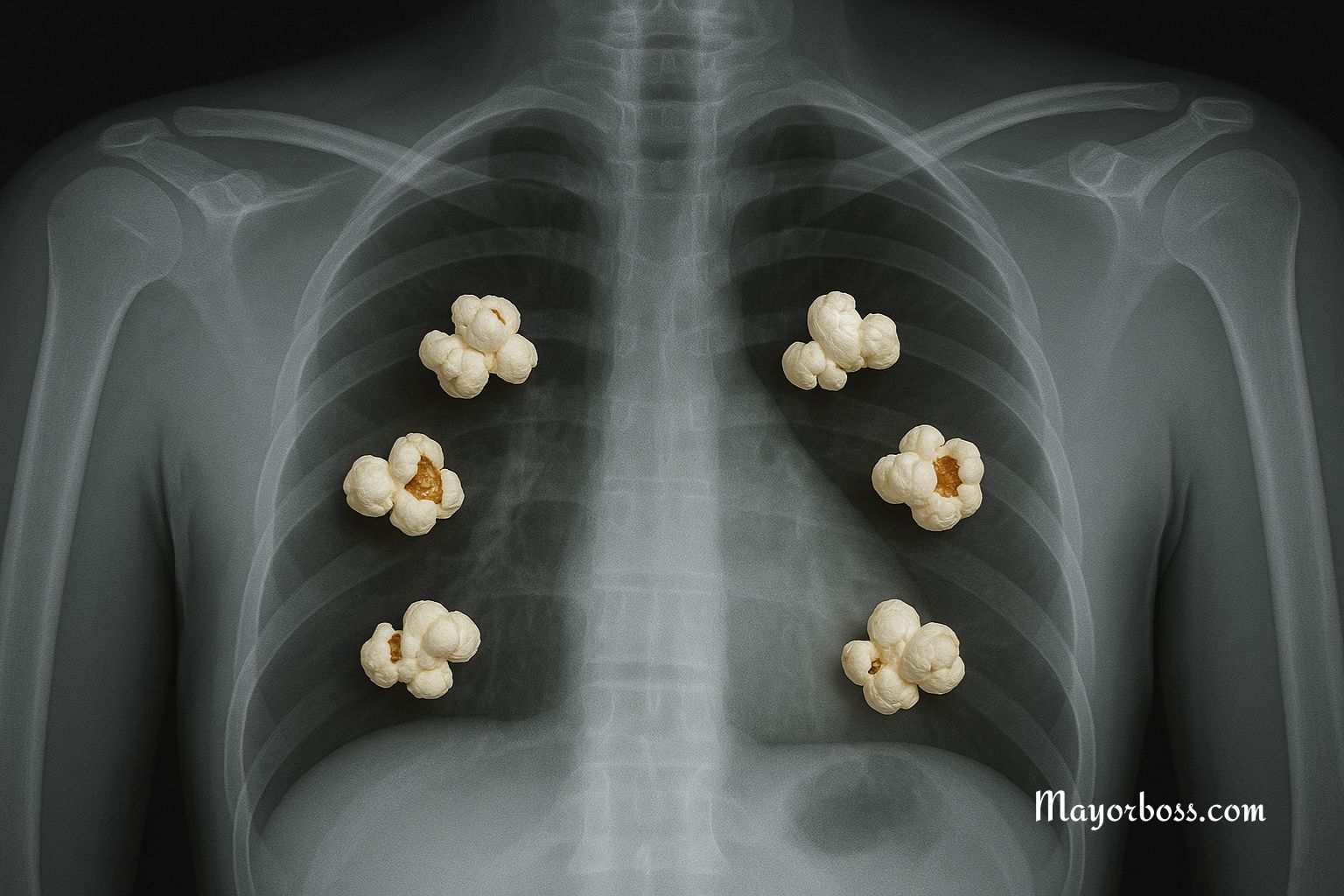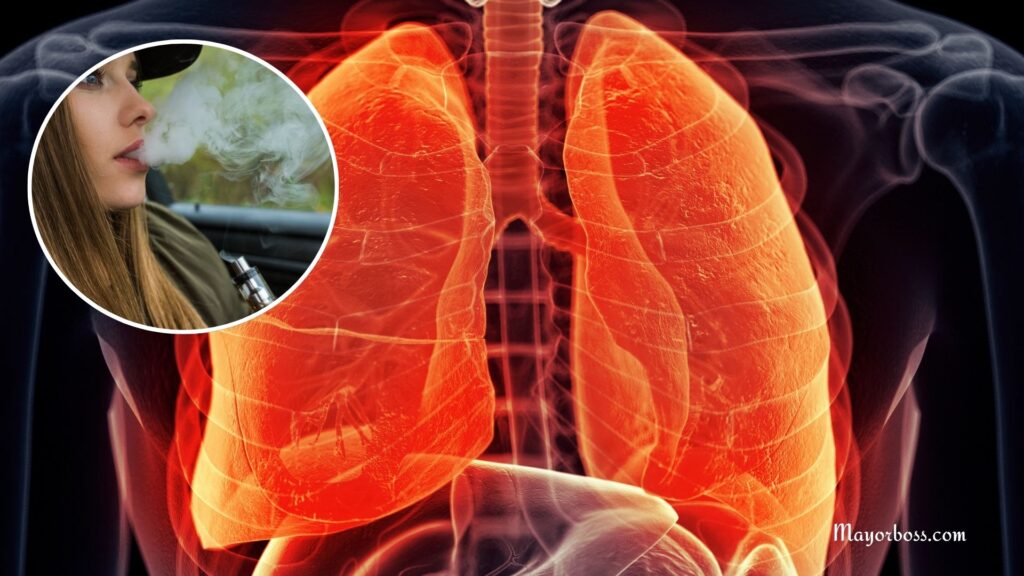Popcorn Lung: What It Is and Why You Should Care
Popcorn lung may sound like a strange or even harmless term, but it refers to a serious and potentially permanent lung condition. The medical name for it is bronchiolitis obliterans. This disease damages the smallest airways in the lungs, called bronchioles, making it difficult to breathe.

What Exactly Is Popcorn Lung?
Popcorn lung is a condition where the tiny airways in your lungs become scarred and narrowed. This scarring blocks airflow, making it harder for air to move in and out of the lungs. Unlike asthma or pneumonia, the damage from popcorn lung cannot be reversed once it happens.
The nickname “popcorn lung” came from a case in the early 2000s when workers in a microwave popcorn factory developed lung damage. Investigators found that breathing in diacetyl, a buttery flavoring chemical used in the popcorn, had caused the illness. Since then, the name has stuck.
Causes of Popcorn Lung

The most common cause of popcorn lung is the inhalation of harmful chemicals, especially over long periods. Diacetyl is one of the main causes. It has been found in artificial flavorings, including those used in some e-cigarettes and vaping liquids.
Other chemicals that can lead to popcorn lung include:
- Acetaldehyde and formaldehyde (found in some industrial settings)
- Ammonia and chlorine (found in cleaning products and industrial fumes)
- Dust or fumes from manufacturing plants or chemical factories
In some cases, certain infections or autoimmune diseases can also cause bronchiolitis obliterans. A lung transplant may increase the risk as well due to the body rejecting the new tissue.
Symptoms
Popcorn lung symptoms often look like other lung problems, such as asthma or bronchitis, especially at first. However, the condition can worsen over time, especially if exposure to the harmful chemical continues.
Common symptoms include:
- Dry cough that won’t go away
- Shortness of breath, even after mild activity
- Wheezing
- Fatigue
- Chest tightness
These symptoms usually develop slowly and may become more noticeable over several weeks or months.
How It’s Diagnosed
Doctors usually start with a physical exam and review your exposure history—especially if you work in a place with chemical fumes or use flavored e-cigarettes. To confirm the diagnosis, they may recommend:
- Pulmonary function tests to measure how well your lungs are working
- CT scans to see the shape and condition of your lungs
- Bronchoscopy, a procedure where a thin tube with a camera is used to examine the lungs from the inside
In some cases, a lung biopsy may be needed to confirm bronchiolitis obliterans.
Is Popcorn Lung Curable?
Unfortunately, there is no cure for popcorn lung. The lung scarring is permanent. However, early diagnosis and treatment can slow the disease’s progress and ease symptoms.
Treatment options include:
- Corticosteroids to reduce inflammation
- Bronchodilators to open the airways
- Oxygen therapy for those with severe breathing problems
- Avoiding further exposure to harmful chemicals
In very advanced cases, a lung transplant may be considered, though that carries significant risks.
Vaping and Popcorn Lung: Should You Be Concerned?
The rise of vaping has brought renewed attention to popcorn lung. Some flavored e-cigarette liquids have been found to contain diacetyl, especially in earlier products. While many manufacturers have reduced or removed this chemical, it can still be found in some vape products today.
According to Cancer Research UK, “there have been no confirmed cases of popcorn lung linked to e-cigarettes”. More research is needed to fully understand the long-term impact of vaping on lung health. However, inhaling any heated chemical vapor repeatedly carries risks, and popcorn lung is one of them. That’s why many health experts warn against vaping—especially among teens and young adults.
How to Protect Your Lungs
Here are a few practical ways to lower your likelihood of popcorn lung:
- Avoid using flavored e-cigarettes or vape products, especially if they contain diacetyl
- Wear proper protective gear if you work around chemicals or fumes
- Make sure your workplace follows ventilation and safety guidelines
- If you develop a persistent cough or breathing difficulty, see a doctor promptly
If popcorn lung is caught early, treatment can help you breathe more comfortably and slow the progression of the disease.
